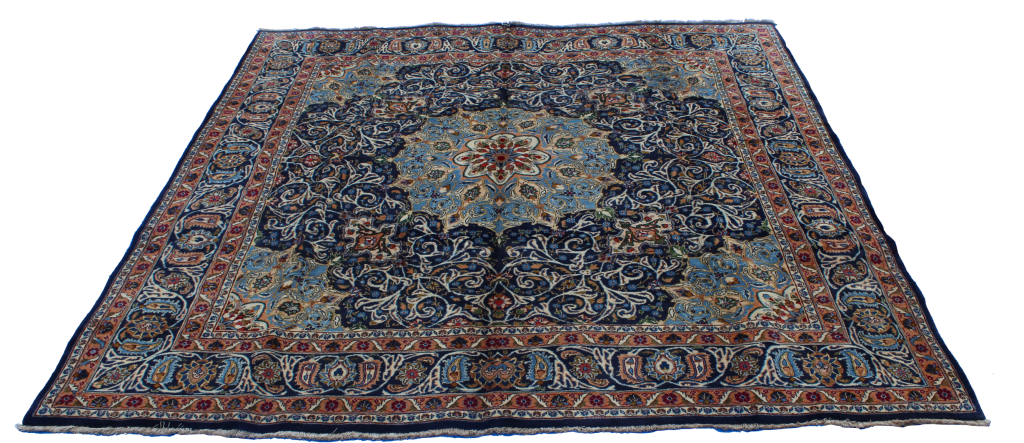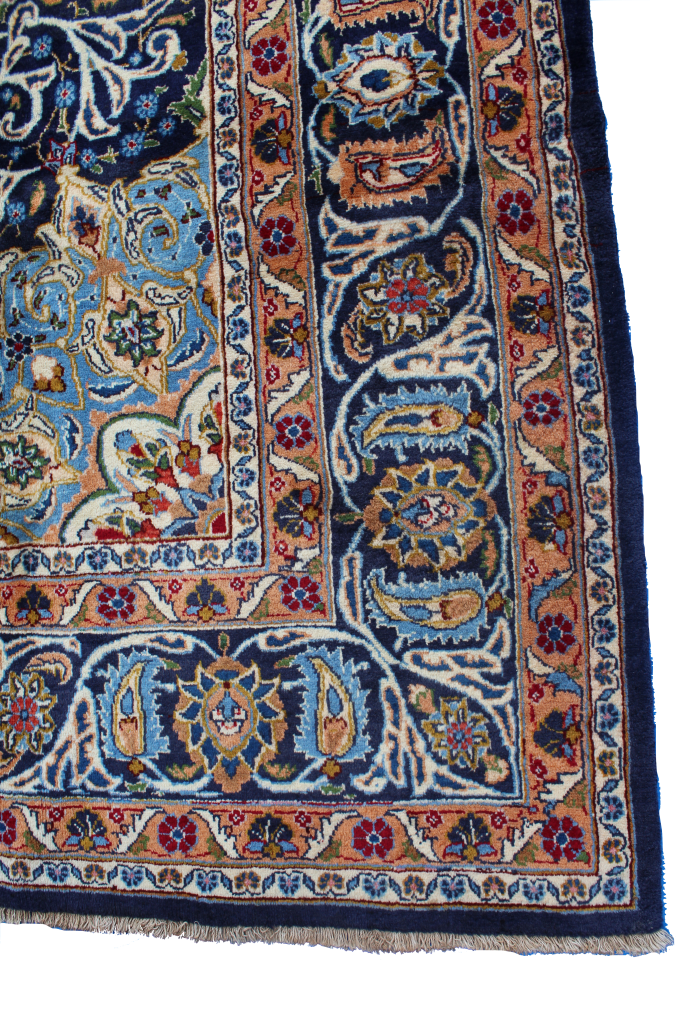How to choose a rug
Over the centuries, Oriental rugs have elevated from a floor and wall covering to an art form. However, it is still of utmost importance that the rugs are functional rather than just something beautiful to look at. Rugs must begin with a certain level of quality to be able to grow and mature. “A good rug is one made from good wool, with good design, executed with good weave and has good colours. It’s really quite simple” – Oriental Rug Gallery artisan weaver
As one would expect, there is a vast range of quality when it comes to oriental rugs. The lower end of the scale is easy to identify. The design is fuzzy and distorted with garish and inconsistent colours. These rugs have one distinct advantage, they are often significantly cheaper than fine pieces and, frankly, they do the job of insulation well. Interestingly, they are often cheaper per square metre than machine made carpets. Since even lower end handmade rugs use genuine wool and it take at least three months to make a 5×3 feet rug, it still carries significantly better value than a machine made rug that is produced in minutes, with entirely with manmade synthetic material that comes with its own set of problems. Such as environmental pollution, no resale value, lacks character and soul etc.
For the first time buyer, it is the higher quality rugs that are most difficult to distinguish. How does one compare rugs and determine the quality? This is even more confusing as a certain amount of variation, and even slight irregularities, are the hallmark of a handmade rug that is celebrated and embraced. Where should you draw the line of what is artistically soulful and unacceptable badly executed?
It is rather simple if one were to start off by understanding all the factors that determines the price of a rug. Cost of materials, labour and handling, size of the rug, quality of the pile, warp and weft, density of the weave and workmanship and area which rug is from, i.e. breed. Finally, your personal needs and preferences will determine how you evaluate these variables. At least a couple of the above variables should be considered when purchasing a rug.
THE INITIAL INSPECTION

When choosing an oriental rug, simply think of the most straight forward question “Do you like the rug?”. Once you can confidently answer that question, you 99% there to having the perfect rug.
It is always best to look at the rug on the floor. After all, once you have taken it home you will be looking at it on the floor. Also, the colours of a handmade rug changes because the rug reflects light differently. This is most noticeable as you walk around the rug. Start out by looking at rugs in all the basic colours, don’t shy away from red or blue; handmade rugs have such an ability to change colour under different lighting that the primitive colour of reds and blues come alive on rugs.
Do ask us to show you a number of rugs. Do not worry about prices and names at this stage. Note down the ones that jump out at you as the most beautiful. Once you have established your preferences, you can then easily make substitution within that particular group of colours and styles to satisfy the needs of your budget. It helps tremendously if you could tell us where the rug will be used, and any information sizes that might help narrow down your choices, once you have established them through the aforementioned of preference selection.
Workmanship
Spread out the rug you want to buy flat on the floor, under lighting that is not too soft or too bright. Look at the design on the field (background within the borders). Make sure all the patterns are symmetrical. Then take a closer look at the individual elements of the design. Is the medallion fairly centred? Are the vertical and horizontal lines straight? Are the repeated motifs uniform? Are corresponding designs in the filed the same size and shape? Is the overall design well balanced? This does not apply to tribal rugs whose essential charm is in irregularities and the weaver’s personal flairs.
Colours
The colours should have lustre, almost sheen, as you walk around the rug. As opposed to a dull, lifeless look that often found on machine made rugs. Check the rug from both ends, as colours vary tremendously. One side, the side where the knots are pulled down, have a much darker and richer look and the designs will appear more distinctive. Then take a look at the lighter colours to make sure that none of the adjoining darker colours have run. Sometimes a slight bit of ‘fugitive’ colour is quite charming, but if it is more serious the rug should not be considered.
Shape
Take a step back and look at the rug in its entirety. Does it lie flat? Does it have a reasonably regular shape? Some rugs could have irregular, undulating sides, narrower in the middle or at the ends, or narrowed at just one end. All these irregularities are caused when the weaver pulls the weft tighter in some spots than others, not unlike knitting a wool jumper and pulling too tightly on certain parts. Some bumps or wrinkles are the result of baling when the rugs are in transport or creasing while they are in storage. They can be easily corrected by stretching or just using it.
Foundation
Make sure the foundation and pile of the handmade rug are free of damage that might have occurred during shipping. Look for obvious repairs or discolouration that may have caused by water.
Cost of materials, labour and handling, size of the rug, quality of the pile, warp and weft, density of the weave and workmanship and area which rug is from, i.e. breed.
A CLOSER LOOK

The key is in looking at the back of the handmade oriental rug. If you ever have the chance to watch a dealer buy rugs, the first thing you will notice is the ritual of kicking over one corner of the rug to look at the back. This is not the tyre kicking ritual that some performs while buying cars. The fact is that the back of the rug reveals everything a dealer needs to know about the rug, even just a little corner. Dealers rely on the weave and the structure on the back to identify the source; since the back is formed out of sight, it often reveals the idiosyncrasies of the weaver and the region. The knot count (how fine is the rug) and uniformity are revealed by the back.
Fineness of weaves
Comparison of the fineness of weaves between two rugs is obvious, the higher the knot count the finer the rug. Or simply remember this rule: the finer the fringe, the finer the rug. The thickness of wefts is also a factor because it affects flexibility of a rug. However, a low knot count rug that feels firm had been woven with heavy wefts, but this type of heavy wefting does not lead to durability. It is best to rely on knot count to assess durability.
Unevenness
Spot any uneven weaving technique and any damages and repairs works. These can be difficult to see on the front of the carpet.
Height of pile
It is important to remember the height of the pile is not a reliable gauge of the rug’s quality. Quality is determined by fineness of the weave, density and quality of the pile materials. Coarse yarns may produce a high, thick pile, but they simply cannot be used to weave delicate patterns. The thicker the yarn, the fewer stiches are possible per square inch.
Wool
Check the way the pile fibre feels. Is it smooth yet touch or does it feel dry and brittle? Good wool has sheen, strength and elasticity. There is a common misconception that softer wool is better wool, and idea populated by softer wool jumper is a better jumper, but the fact is softer wool doesn’t wear well, tends to soil quickly and does not respond well to cleaning as well as sturdy wool that springs back after it has been pressed down. Wool harvested from warmer climate has less strength and durability that wool from colder climates, which is one of the factors why Indo-Asian oriental rugs appear softer than Persian oriental rugs but rarely achieve antique status.